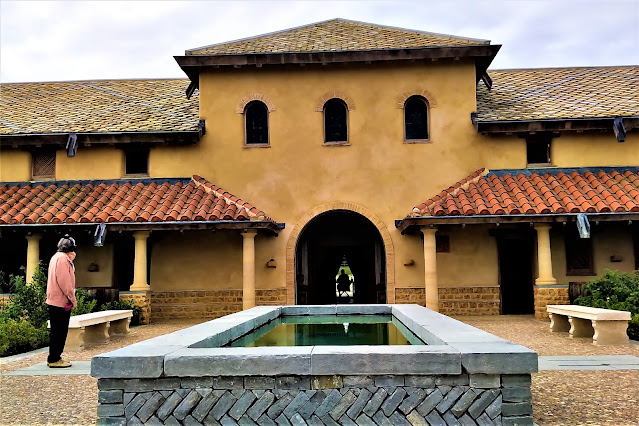Brading Roman Villa, Isle of Wight, England
Introduction
This evening, I am reporting on a recent visit to Brading Roman Villa on the Isle of Wight which is situated off the south coast of England.
Information on Brading Villa.
In common with many of it's peer group on the mainland, the villa evolved from a somewhat primitive, iron-age settlement to a sumptuous upscale residence over a period of about 400 years.Around AD 400 the Romans abandoned Britain and villas like the one at Brading fell into decay and were abandoned.
Pre-Roman, iron age settlement at /near the Brading villa site.
Map of the Isle of Wight showing location of various, known Roman villas.Brading is no 8 at the far right.This location afforded Brading with commercial advantage owing to easy access to sea transport. Key export would have been grain which generated the wealth to develop the villa site, particularly during the latter Roman period when sales to the Roman army of the Rhine were particularly lucrative.
Brading villa in context of local landscape.
Another landscape view of the villa in it's prime.
North range in the 3rd century.Landscape view of site today
Hypocaust tiles used in underfloor heating.
Miscellaneous tiles found on site
Impressions on on underside of boots/sandals made during process of drying tiles.
Floor Mosaic
Section of excavated site
Mosaic dating from mid fourth century. Made of coarse tesserae and much damaged by burning. A simple, geometric design.
Gallus
Video clip of various (and diverse finds)
Video clip of mosaics.
Plan of site
It is estimated a time lapse of about 300-400 years was required for the once elaborate and high status villa to disappear completely from the landscape.
Similar villas can be seen at Chedworth and North Leigh. A completely reconstructed villa can be seen at the Newt site in Somerset.
More information on Roman Britain can be viewed here.
















Comments
Post a Comment